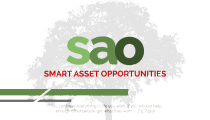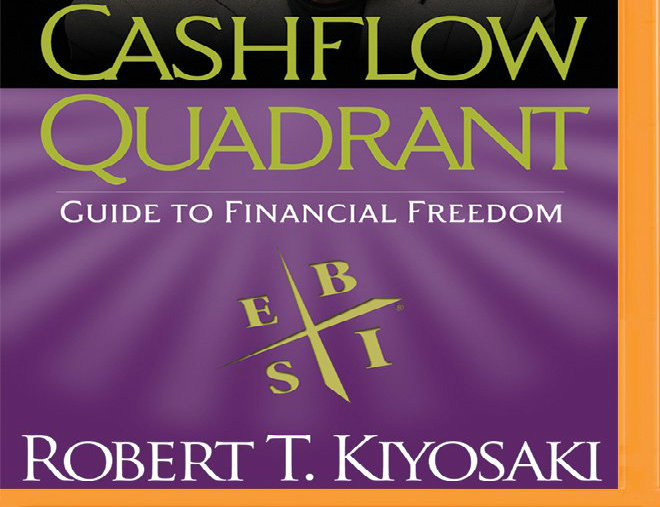It’s no surprise Robert Kiyosaki (Rich Dad Poor Dad) is a big influence on me and the SAO team. If you’re familiar with his philosophies, teachings and books, you’ve probably caught a few references in our previous posts.
My favorite book by Kiyosaki, Cashflow Quadrant: Rich Dad’s Guide to Financial Freedom references an important graphic called the Cashflow Quadrant that defines the four different kinds of people that make up the business world.
A Story Is Worth 1,000 Words
He tells a wonderful story of two men living in a small village where water access is a constant issue. One man sets out to instantly solve the problem all on his own by hauling buckets of water from the source to the village, traveling one mile in each direction. It’s hard, slow work, but the immediate pay back is rewarding, and he’s able to support himself and his family. He is essentially a small business owner.
The other man takes a few months of deliberation and planning before taking action. When he resurfaces in the town, he’s strategized a comprehensive business plan, found investors, hired a team and then begins construction on a state-of-the-art pipeline that will transport more accessible and cleaner water to the town in less time than our solo entrepreneur. He is a big business owner.
Can you guess what happens?
Both men stay in business. But our small business owner is constantly in a battle of struggle and strife, trying to keep himself afloat, as the fate of his business rests on his shoulders.
On the other hand, our big business owner has assembled a team that operates efficiently with or without him, and has even begun to expand their operations to other communities. In the end, his cashflow does not rely on him at all, and he’s able to enjoy his life with true freedom.
So, Which Quadrant Are You In?
Take a look at the full graphic:
| (poor) | (rich) |
| Employee | Big Business |
| Small Business | Investor |
| (freedom) |
The E’s stand for employee, those who work for someone else. They are typically those who are looking for a “safe, secure job with benefits.” Their core value is security.
S stands for small business owner or self-employed. They are the type to take initiative and have a “do-it-yourself” mentality. Typically they are a one-man show or operate solo.
B stands for big businesses, typically of 500 employees or more. They look for systems, processes, people and networks that will run their organization and make money.
Finally, you have the I’s, investors. Investors make their money work for them by putting it towards other people’s ideas and businesses.
People in the E and S quadrants work for the people in the B and I quadrants.
Where You Want to Be
I’ve lived my entire life in the S-quadrant and, frankly I’m still there. But I do also have a business (B-quadrant) and I am an investor (I-quadrant).
The problem with being on the left-hand side is always relying on transactional income. You must exchange your time to make money, meaning you can never truly quit working.
On the right-hand side of the quadrant (B & I), if you have a true business, you don’t have to be there everyday to make things work. And if you’re an investor, you’re simply investing in other people’s businesses and getting a return for it.
In Kiyosaki’s words, “you can never have true freedom without financial freedom.”
I love this because it’s exactly the principle I live by and encourage others to believe in.
We Are Given an Education, But Must Take Our Freedom into Our Own Hands
When you take a look at many of the most successful people in our world (past and present), they never finished school. That goes for big names like Thomas Edison, Henry Ford, Steve Jobs, Bill Gates, Walt Disney and Mark Zuckerberg.
As Kiyosaki points out, school doesn’t do much by way of teaching us how to deal with finances or running a business.
It’s no coincidence that many of those same people who never finished school, wind up being a massive success. It’s because they didn’t take the “traditional” route. School didn’t exactly fit them well, so they carved out their own path and created their own space where they could flourish.
A-students like doctors and dentists, who follow the “rules” and do everything “right” (like me!), do not typically do well in business because they’re afraid of making mistakes, of taking risks. They’ve been rewarded all their lives for not making mistakes. From elementary school through high school, grades defined their future.
Then in college, graduate school, law school or medical school, performing well on exams culminated into a grade point average, a number that defined your achievements and whether or not you would succeed.
Although still making money, they do not transition to the right-hand side of the quadrant where true financial freedom resides.
The people who are not afraid to make mistakes, wind up being some of the most successful and famous entrepreneurs and business owners, like the Edison’s, Zuckerberg’s and Disney’s. It’s because they’ve made a lot of mistakes, and they’re not afraid to continue making them.
Move fast and break things. Unless you are breaking stuff, you are not moving fast enough — Mark Zuckerberg
I have not failed. I’ve just found 10,000 ways that won’t work — Thomas Edison
Want to Be Financially Free? You Might Want to Consider This
The straight-A students (left-hand side of quadrant) are often so paralyzed by making mistakes that they never veer off their pre-defined path. Therefore they miss out on opportunities for true success and financial freedom.
What’s more, those on the left side of the quadrant pay the most taxes because the tax system does not reward people for working as an employee.
The government rewards people in the B and I quadrants who run a large business (500 people or more) or invest in certain things (like real estate) that provide housing for people.
Truth is, it’s okay to work for somebody else, it’s okay to own a small business and be in the S-quadrant if that’s what you want. But in those quadrants you’re never going to gain personal financial freedom; and it’s very difficult to transition out of them.
So to answer the question: Should you quit school to be successful? No. You don’t have to quit. But now you have the knowledge of these four quadrants. What you do with that knowledge is up to you.
If you are ready to make the transition, the easiest place to move is the I-quadrant and make your money work hard FOR you.
Sure, you can still live part of your life in the E and S quadrants, but you’ve got to figure out a way to make income that’s not dependent on you showing up everyday.
That is true freedom.
Think you might be ready to start the journey?
When you’re ready, we’re here.

